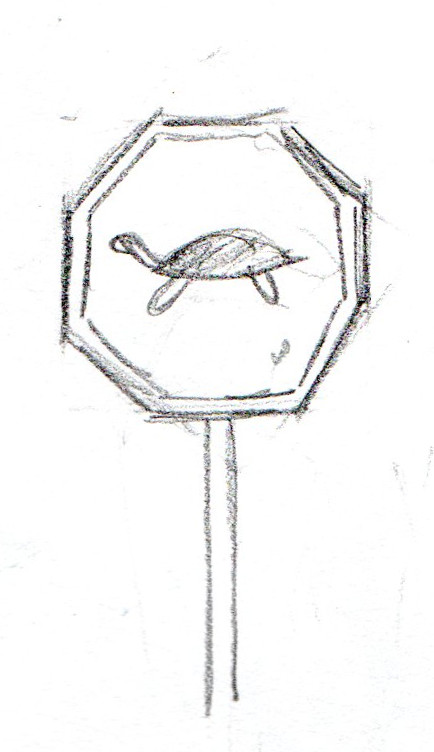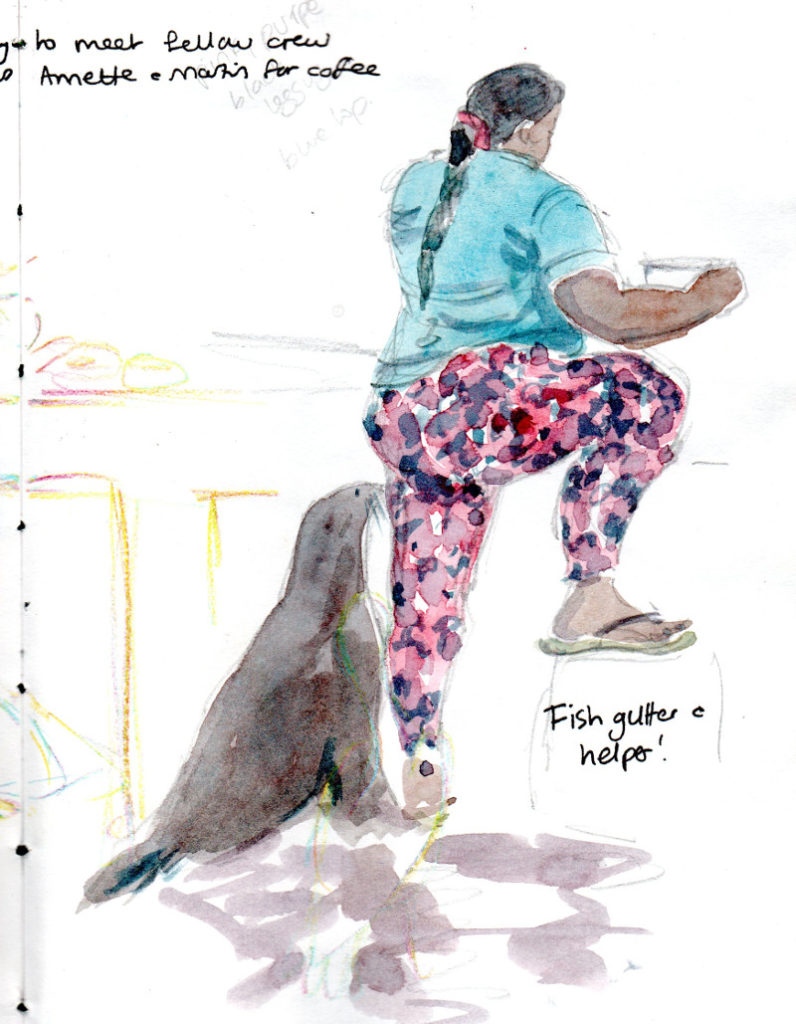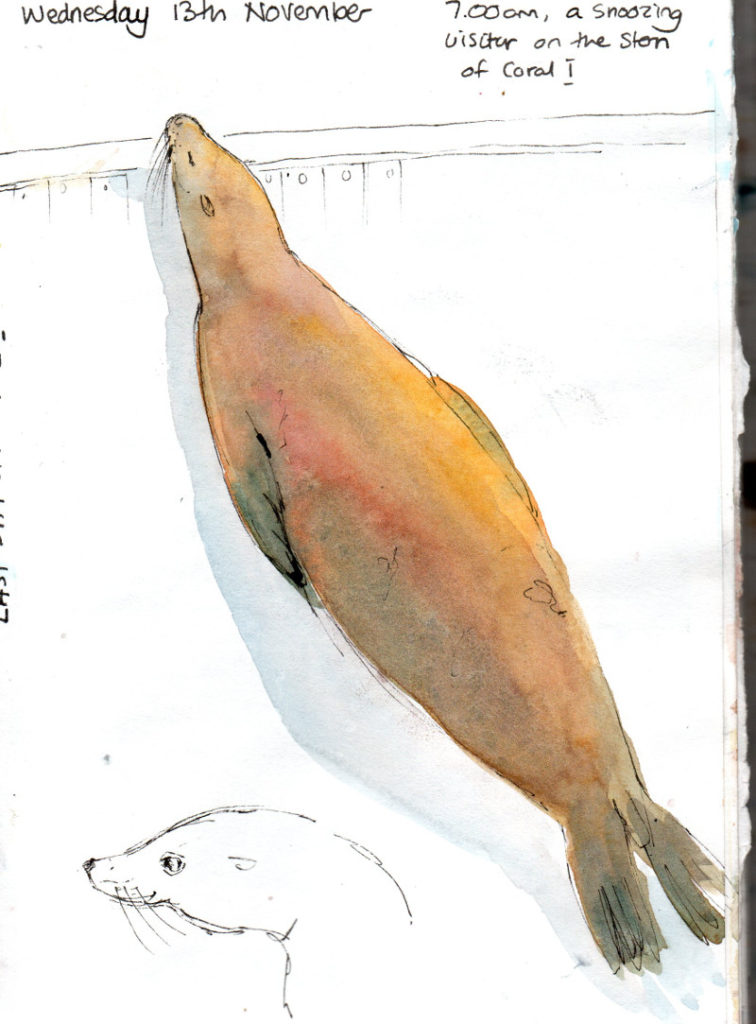Oceans and islands Part One
I’ve never bunked off work for two months before, and apologies to anyone who’s been trying to get hold of me whilst I was away, but I’m so glad I did it. My little adventure was at times exciting, surprising, challenging, enjoyable, dull, relaxing, stressful, easy, and tough. I’ve walked in wild places, swum in the ocean at 4km deep when it was warm and calm, been covered in icy spray whilst sail handling on dark night when it’s been cold and stormy. I’ve been from the equator to the southern ocean, rounded Cape Horn accompanied by wandering albatross, explored three very different islands and found people everywhere to be friendly and helpful to a lone traveller.

There was no opportunity to do blog posts as I travelled due to limitations of internet availability, so I saved it all up until getting home to a proper wifi connection, computer and scanner. I’ll post several episodes over the next week or so if that’s ok – you don’t have to read them! – and I’ll try and keep it brief. I filled two sketchbooks, one ashore and one afloat, and will post a few snippets. There’s enough material to fill a book, which I’m looking into, and it would be useful to know if there would be a demand for it if I did publish my sketchbooks. Your feedback would be welcome!
Galapagos – early November 2019

I wish I had learned to speak Spanish. After thirty hours and three flights (without a meal or a cuppa as Avianca airlines don’t do a) tea or b) vegetarian meals), followed by a bus and a ferry ride, I’m in a taxi to Puerto Ayora on the Galapagos Island of Santa Cruz. The taxi driver is keen to tell me everything he can about the islands, but as he speaks no English and I speak no Spanish, we agreed on French as a common language. This is a bad idea as my French, such as it was, is very rusty and I’m struggling, making do with nodding vigorously and saying ‘Ah, oui, bien sur!’ from time to time. All taxis on santa Cruz are white pick up trucks and there is only one main road, from ferry terminal to town. There are giant tortoises on the side of the road, eating grass; with a supreme effort I manage to ask my driver, in French, if the tortoises ever wander into the road and get hit by a car. (they rarely get hit, in case you were wondering).

My hostel is basic but cheap, a plain room full of beds and a courtyard outside with a hammock slung between bougainvillea trees in full bloom. The lock on the door doesn’t work but the shower does, and it’s a few minutes from the centre of this small town. It’s easy to walk from one end of the high street to the other, check out which bars and cafes look good, take in the sights and sounds of a new place. But first – sleep and plenty of it!

On the Galapagos, humans are the invasive species and tourism is strictly controlled. There are a few places you can wander alone, or take day trips, but to explore properly you need the National Park Guides, who are impressively well informed and passionate about their work. The job of the guides is to show us as much as they can whilst making sure that we tread lightly. In spite of the fact that over 250,000 people visit the islands each year, there is a rule that no more than 100 people at a time are allowed at each of the popular tour locations. I took a three day cruise on board ‘Coral I’, a very comfortable little ship, well equipped with snorkelling gear and with two National Park Guides on board, so that I could visit some of the more remote spots and uninhabited islands. Because these volcanic islands are so new, geologically speaking, there is the feeling of stepping back far in time and seeing the planet in its early days, bare rock with a few plants trying to get a foothold; pristine white beaches fringed with mangroves and the animals unafraid.

We have centuries of damage to undo. The native sea lions and turtles were naturally a popular source of food for early explorers, buccaneers and other sailors visiting the islands to repair ships and stock up with food. Goats and rats brought by ships caused havoc with native species and have gradually been eradicated. It took several decades for the sealions to lose their fear of humans; now they are delightfully unbothered by their human neighbours. I had the privilege of snorkelling with a large sealion who came over and decided to show me how swimming should really be done. As there is a strict rule not to touch any of the animals, I had to swim away to avoid direct contact. The population of sea turtles has recovered partially, but of course no island is truly an island as the oceans are connected and no amount of bio-security can counter the wider problems of climate change and plastic pollution.

(A note of thanks to the team at Art Safari (www.artsafari.co.uk) for helping me to plan and get the best out of my trip to Galapagos – if you’d like to visit the islands and learn to sketch the wildlife with a sympathetic and experienced tutor, I think there are a few places left on their trip in May)
Throughout the week I had started to meet up with the others joining sailing ship Tecla for our passage to Rapa Nui (Easter Island). A few of us had been in touch via facebook; gradually we gathered in a cafe each evening and kept up to date with the ship’s whereabouts. There are strict rules for ships entering the Galapagos and the rules have tightened since Tecla’s owners first planned their itinerary; they now found they were required to call at mainland Ecuador for thorough cleaning and checking, including sending divers down to clean off the hull. This all now had to be checked again on entry to the islands, which meant a change of venue – we were asked to join her a day later than planned at San Cristobal, a two hour ferry ride away. None of us minded; the bio-security procedures are expensive, tedious, and the system is far from perfect, but having spent a week on the islands it is easy to appreciate what they are trying to do.

Long distance sailing takes a great deal of planning, and Tecla (www.tecla-sailing.com) has been at sea since April when she left the Netherlands and sailed north to the Hebrides, Iceland, Greenland and into the Bering Strait via the legendary Northwest Passage. She sails with Captain, three professional crew and up to 12 paying ‘voyage crew’. Eleven of us finally gathered at the quayside on San Cristobal, a mixed bag of English, Scottish, Irish, Australian, New Zealand and American. Tecla was anchored in the bay and we had time for a last beer and wifi connection in a waterfront bar. Due on board at 6pm we piled our luggage into a water taxi and asked to be taken to ‘la barco’ with a wave of our hand towards the only sailing ship in the bay. The crew were waiting to take our bags as we came alongside and Gijs, the captain, was cooking up a welcome meal in the galley. We found our bunks and took stock of the boat that would be our home for the next few weeks. The voyage was about to begin!


What a lovely read. What an adventure you had. Looking forward to the next post.
I would buy your book Claudia
Can’t wait for the next installment.
Very interesting. Beautiful sketches and good script. Look forward to reading next instalment.
Wow Claudia and I am 73 next week and never been anywhere I must love Suffolk Good for you well done and lovely pictures kind Regards Bob xx
Looking forward to the next installment, and yes, publish the sketchbooks please.
Really enjoyed reading your lovely blog, looking forward to the next instalment.
Yes if you publish the books then we would like a copy.
Ooh, waiting for part 2. I think I will like the land bits better than the ocean!
Put me down for the book! Looking forward to next instalment
Wow Claudia! I knew I should have come too! Xx
Fantastic – really looking forward to the next episode!
Great read
Awaiting next instalment ?
Great read. Keenly awaiting chapter 2
What a wonderful sounding trip, can’t wait to read more!!! Your illustrations are so wonderful, as always!
Fascinating stuff Claudia, a ripping yarn in the making….
I too wished I could speak Spanish when I was in South America. I had to make do with grunts and gestures. Go for the book, it will work well for you.
Love this Claudia! Can’t wait Fotherop next instalment! Xx ???
Wonderful – this is like the original Dicken’s stories in instalments! Great to read about somewhere I haven’t been & imagine going there myself. Book sounds a good idea too.
Looking forward to more Claudia. I’d buy the book.
What a wonderful trip – eagerly awaiting second instalment! Have you got your tongue round the Captain’s name yet?
What an inspirational adventure. I will be adding a trip like this to my bucket list! Looking forward very much to your next instalments, and to your book. Your drawings are wonderful. 🙂
Thoroughly enjoyed reading your first chapter & the sketches – so fresh & it’s very heartening to hear of the care being taken of the bio-diversity. Looking forward to the next instalment. YES, I would buy your book ??
Please write the book. I will buy it. Envious of your bravery in doing this trip. Looking forward to the next episode
Can’t wait for a signed copy of
tu libro! x
Tu est AWESOME !! xx
Really enjoyable ?
Yes, you MUST write a book! Fabulous journal. xx
I have always wanted to do your trip! So roll on your book!